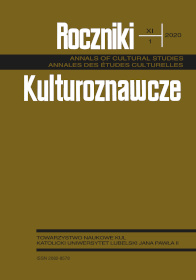Impact of Unbalanced Population Growth in the Southern Neighborhood of Europe on the Occurrence of Internal and Regional Conflicts
Abstract
The population growth in Middle East and Africa is not only much bigger than in Europe but also regionally unbalanced. This means that the proportions of this macroregion population with regard to the various states as well as ethnic, tribal and religious groups are in the process of a significant change and it will be continued in the nearest decades. As population is a fundamental element of the states power it will have not only internal consequences but also geopolitical impact. Rapid population growth on one hand may weaken and destabilize some states if its governments will not be able to properly manage it, especially with regard to employment. But population may also be used to project power in regional rivalry, threaten other states with migration flow as well as to challenge other countries militarily. The impact of unbalanced population growth in Middle East on regional stability and security do not seems very optimistic. Most probably it will lead to new regional competition along sectarian and ethnic lines and geopolitical rivalry among the states of this region. The population growth of two of the three countries with biggest population in this region, namely Turkey and Iran, is quickly declining. This is important also because these countries aspire to the role of regional powers. On other hand the country with the biggest population growth in Middle East is Iraq that is widely considered a weak if not failed state. Unsolved ethnic problems, especially Kurdish and Palestinian issue, will add up to the uncertainty of stability and probability of escalation of old conflicts, especially as the population growth among these ethnic groups is higher then average in the region. In Africa unbalanced population growth may cause tribal conflicts. Proximity of Europe and high probability of migration from conflict zones makes the issue of unbalanced population growth and its consequences in Middle East and Africa a challenge also for European stability and security
References
„Average marriage age in Iran increased by 3 years”. Tehran Times. Iran’s Leading International Daily. Dostęp 27.12.2019. https://www.tehrantimes.com/news/424338/Average-marriage-age-in-Iran-increased-by-3-years.
Białoskórski, Robert, Łukasz Kiczma i Mirosław Sułek. Potęga państw 2019. Rankingi potęgometryczne. Warszawa: Oficyna Wydawnicza Aspra-JR, 2019. DOI: 10.13140/RG.2.2.33929. 90722.
Białoskórski, Robert, Robert Kobryński i Mirosław Sułek. Potęga państw 2017. Międzynarodowy układ sił w procesie zmian. Raport potęgometryczny. Warszawa: Oficyna Wydawnicza Aspra-JR, 2017.
„Egypt: Youth unemployment rate from 1999 to 2019”. Statista. Dostęp 27.12.2019. https://www.statista.com/statistics/811968/youth-unemployment-rate-in-egypt./
„Global Firepower 2020”. GFP. Strench in Numbers. Dostęp 27.12.2019. https://www.globalfirepower.com/.
Kaczmarski, Marcin. Realizm neoklasyczny. W: Teorie i podejścia badawcze w nauce o stosunkach międzynarodowych, red. Ryszard Zięba, Stanisław Bieleń i Justyna Zając, 13–27. Warszawa: Wydział Dziennikarstwa i Nauk Politycznych Uniwersytetu Warszawskiego, 2015.
Koc, Ismet, Alanur Çavlin i Attila Hancioglu. „Demographic differentials and demographic integration of Turkish and Kurdish populations in Turkey”. Population Research and Policy Review 27 (2008), no. 4: 447–457. DOI: 10.1007/s11113-008-9072-y.
Lorenz, Frederick, i Edward J. Erickson. The Euphrates Triangle: Security implications of the Southeast Anatolia Project. Washington, D.C.: National Defense University Press, 1999.
Repetowicz, Witold. „Broń ‘D’ jako zagrożenie asymetryczne”. Wiedza Obronna 2018, nr 1-2 (262-263), 107–125.
Stoessinger, John G. The Might of Nations: World Politics in Our Times, 3rd edition, New York: Random House, 1969.
Sułek, Mirosław. „Globalny układ sił – stan obecny i kierunki ewolucji”. W: Studia nad geopolityką XX wieku, red. Piotr Eberhardt. Seria: Prace Geograficzne nr 242, 77–96. Warszawa: IGiPZ PAN, 2013.
Sułek, Mirosław. „O potęgonomii i potęgometrii”. Nowa Geopolityka. Dostęp 25.05.2020. https://geopolityka.net/o-potegonomii-i-potegometrii/.
Sułek, Mirosław. Potęgometria. T. 1. Warszawa: Europejskie Centrum Analiz Geopolitycznych, 2017.
The World Bank. Data. Dostęp 27.12.2019. https://data.worldbank.org.
United Nations Development Programme. Human Development Reports. Dostęp 27.12.2019. http://hdr.undp.org.
Worldometer. Population. Dostęp 03.08.2020. https://www.worldometers.info/population/.





